Ganesh Chaturthi, also known as Vinayaka Chaturthi, is one of the most celebrated Hindu festivals in India. This auspicious festival honors Lord Ganesha, the elephant-headed God of wisdom, prosperity, and good fortune. The festival typically lasts for ten days, and it is marked with grandeur, devotion, and cultural diversity.
Historical Significance:
The origin of Ganesh Chaturthi dates back to the time when the great Maratha ruler, Chhatrapati Shivaji Maharaj, initiated the public celebration of the festival to promote unity and nationalistic fervor. However, the festival’s roots can be traced further back to ancient Indian scriptures, where Lord Ganesha is revered as the remover of obstacles and the harbinger of success.
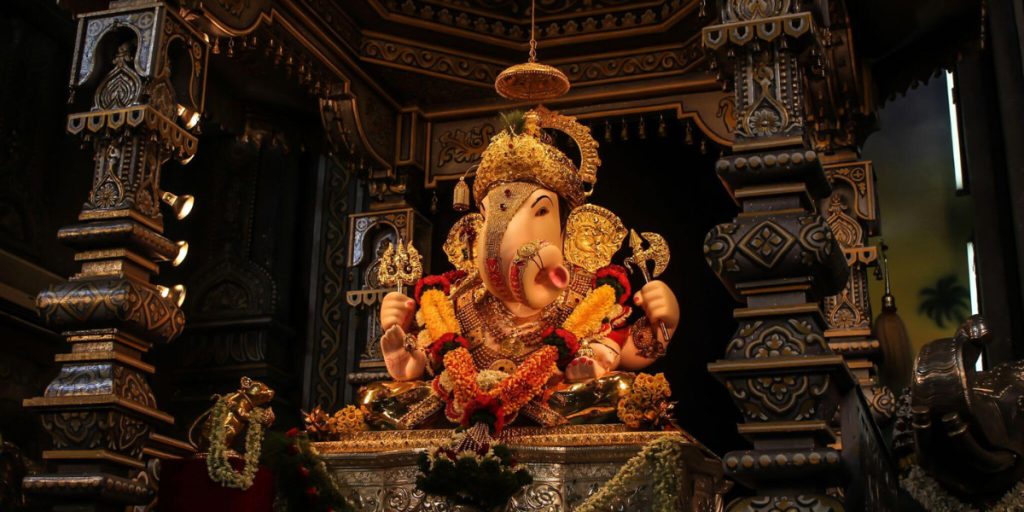
Also Read: मुंबई: 69 किलो सोने, 336 किलो चांदी से सजी भगवान गणेश की मूर्ति
Preparations and Festive Atmosphere:
The preparations for Ganesh Chaturthi begin months in advance. Artisans craft clay idols of Lord Ganesha in various sizes, some of which are towering and intricately designed. These idols are then placed in beautifully decorated pandals (temporary shrines) or homes. Devotees fervently clean their surroundings, decorate their homes with flowers, and create colorful rangoli designs to welcome the Lord.
Ganesh Sthapana (Installation):
On the first day of the festival, Ganesh Sthapana takes place, which involves the ceremonial installation of the idol. This ritual is performed with great devotion, and mantras are chanted to invoke the presence of Lord Ganesha. The idol is adorned with vibrant clothing, jewelry, and flowers.
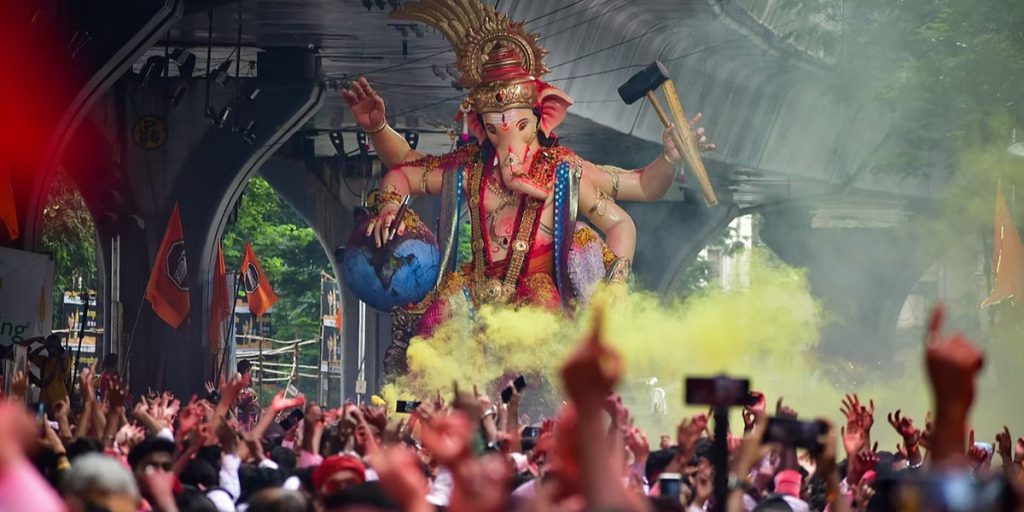
Daily Rituals:
Throughout the ten days, devotees offer prayers, sing bhajans (devotional songs), and perform aarti (rituals involving fire lamps) to Lord Ganesha. Modak, a sweet delicacy, is prepared as it is believed to be Lord Ganesha’s favorite food. Devotees offer these sweets to seek his blessings.
Visarjan (Immersion):
The grand culmination of the festival is Ganesh Visarjan, when the idols are taken in grand processions to rivers, lakes, or the sea for immersion. It symbolizes Lord Ganesha’s return to his heavenly abode, and devotees bid farewell with a heavy heart but filled with hope and faith.
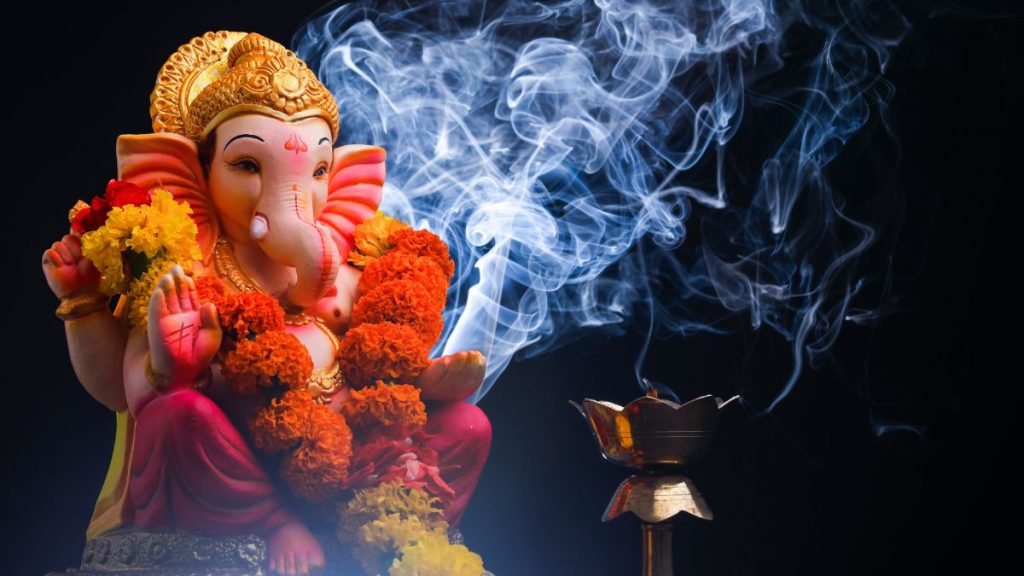
Also Read: राजस्थान में 26 उंगलियों वाली अनूठी बच्ची ने लिया जन्म
Cultural Unity:
One of the remarkable aspects of Ganesh Chaturthi is its ability to bring people together irrespective of caste, creed, or social status. The festival transcends boundaries and unites communities through prayers, music, dance, and cultural performances.
Environmental Concerns:
In recent years, there has been a growing awareness about the environmental impact of the festival, particularly regarding the materials used in idol-making and immersion. Many organizations and individuals have taken steps to promote eco-friendly celebrations, using clay idols and minimizing pollution.
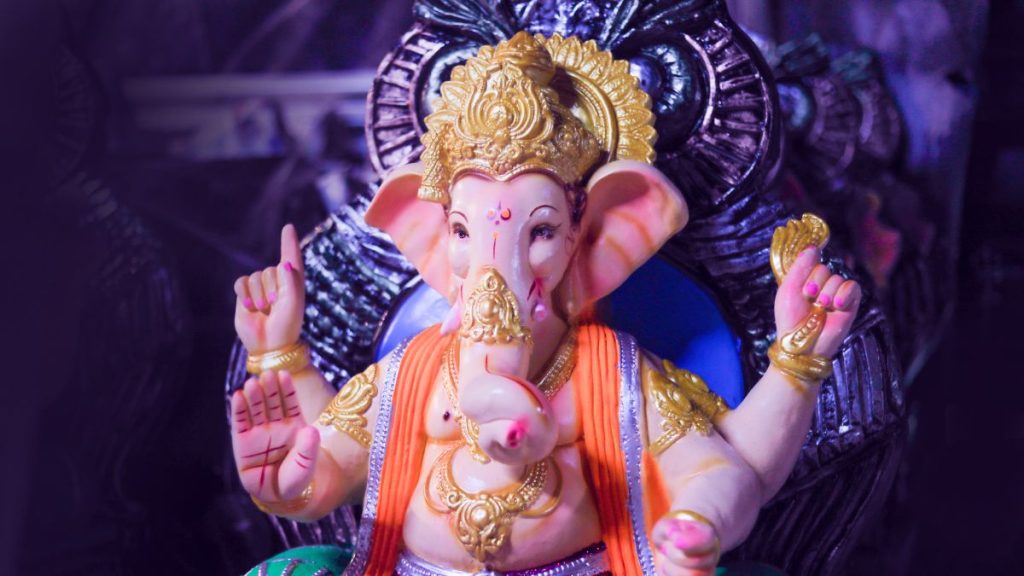
Conclusion:
Ganesh Chaturthi is a festival that epitomizes devotion, artistry, and the spirit of unity. It not only celebrates the birth of Lord Ganesha but also serves as a reminder of the values he represents—wisdom, prosperity, and the removal of obstacles. The elephant-headed God bestows his blessings on his devotees. Ganesh Chaturthi continues to be a time of joy, reflection, and communal harmony.
Also Read: World Ozone Day: Preserving Earth’s Protective Shield






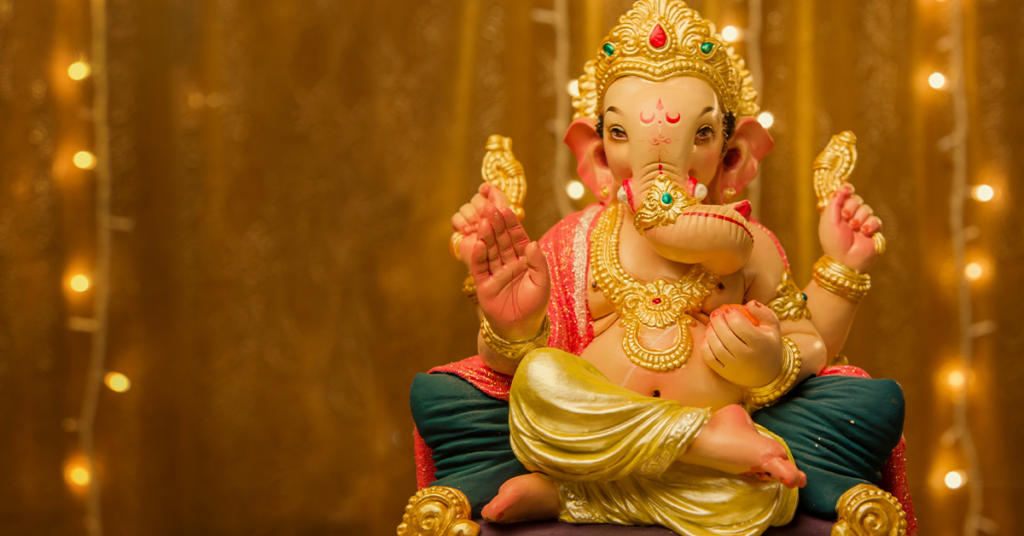




More Stories
Box Office Collection: वीकेंड खत्म होते ही ‘भूल चूक माफ’ की कमाई में भारी गिरावट, जानें बाकी फिल्मों का भी हाल
Kangana Ranaut hails Clint Eastwood for working at 95, calls him ‘yogi’: ‘People like him make artists look so good’
Ishaan Khatter makes fans scream as he pulls off butter smooth dance moves at Miss World 2025: Watch